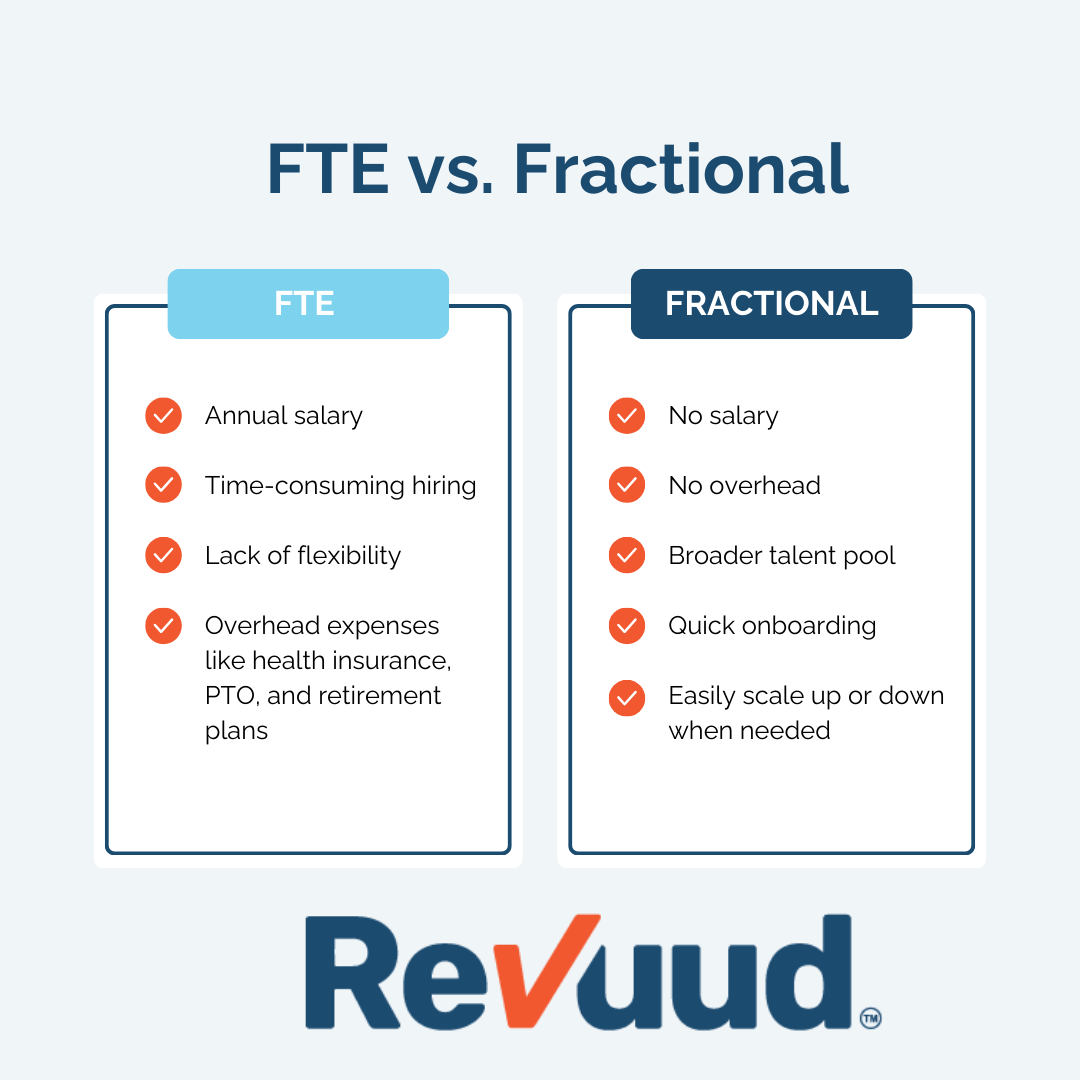Skip the Healthcare IT Consulting Firms
There’s a Smarter Way to Hire Tech Talent
If you're still using traditional healthcare IT...

As a CTO or CIO within a healthcare organization, you're constantly faced with critical decisions, especially when it comes to staffing your IT department. One of the most significant decisions you'll make is whether to hire full-time IT staff (FTE) or utilize fractional resources.
Each option comes with its own set of advantages and considerations, and understanding the differences is crucial for making an informed choice that aligns with your organization's goals and needs.
Let's start by examining the traditional approach of hiring full-time IT staff. FTE employees are dedicated members of your team, working exclusively for your organization on a permanent basis. While FTEs offer stability and continuity, they also come with significant costs beyond their salaries. These costs include benefits such as healthcare, retirement plans, paid time off, training, and overhead expenses associated with maintaining a full-time workforce.
On the other hand, fractional IT resources provide a more flexible alternative. With fractional staffing, you have access to skilled IT professionals on an as-needed basis, without the long-term commitment of hiring full-time employees.
Cost Efficiency: Fractional IT resources save costs compared to full-time hires. You only pay for the services you need, cutting overheads associated with maintaining a full-time workforce.
Flexibility and Scalability: Healthcare environments are dynamic, and IT needs can change rapidly. Fractional staffing allows you to scale your IT workforce up or down as needed, without the constraints of traditional hiring processes.
Access to Specialized Expertise: Fractional staffing provides access to specialized expertise not available in-house. Whether you need project managers, data analysts, or niche software developers, you can tap into a broader talent pool.
Reduced Recruitment Burden: Hiring full-time staff is time-consuming and resource-intensive. Fractional staffing streamlines the process, enabling quick onboarding of qualified professionals, freeing resources for critical projects.
And by using a platform like Revuud, you're able to seamlessly tap into this pool of trusted fractional resources as projects ebb and flow. This is when health systems really start to see remarkable efficiency gains and cost savings.
Cost is a crucial factor when deciding between FTEs and fractional IT staffing, especially for healthcare organizations. Here are 8 key considerations:

By carefully evaluating these cost considerations, healthcare organizations can make informed decisions that align with their budgetary constraints, operational needs, and strategic objectives. Whether opting for full-time or fractional IT staffing, prioritizing cost efficiency and flexibility is essential for driving sustainable growth and innovation.
Agility and cost efficiency are paramount. As technology continues to transform the way healthcare organizations operate, the traditional model of hiring full-time IT staff may no longer be the most effective or sustainable approach.
That's where Revuud comes in. We're more than just a marketplace; we're a comprehensive SaaS solution designed to streamline the entire process of sourcing, hiring, onboarding, managing, and paying IT contractors.
With Revuud, healthcare organizations gain full visibility and control over their contractor workforce while ensuring compliance and maximizing business growth. Empower your teams to work faster and focus on what matters most—improving patient care.
If you're still using traditional healthcare IT...
In today's rapidly evolving healthcare IT landscape, organizations face the challenge of finding...
The healthcare industry is undergoing rapid digital transformation, making healthcare IT contract...